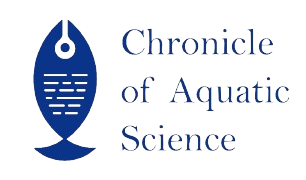| File | Action |
|---|---|
| Tandel and Solanki, 2023 | Download |
- 919088951040 call us
- chronicleofaquaticscience@gmail.com Mail us
CoAS_V1IS2_10
Mini-review
Seafood Waste as a Nutrient-Dense Source for Calcium Supplements in India: A Minireview
Ritika A. Tandel and Jitesh B. Solanki
Abstract
Calcium is an important mineral that is essential for human health, particularly bone health. Marine biological calcium is a plentiful supply with a complicated active structure that is well accepted. India has a long coastline, and seafood is an important element of its cuisine, culture and economy. However, seafood processing generates a significant amount of waste, which causes environmental issues and creates waste management challenges. Simultaneously, calcium deficiency is a serious public health problem in India, impacting people of all ages. This article presents a solution to both of these issues at the same time by extracting calcium supplements from seafood trash. The article investigates and assesses the viability of using discarded seafood shells as a source of calcium supplements and the provision of a low-cost and long-term solution.
Keywords
Calcium, Seafood waste, Processing, Calcium Supplement, Calcium deficiency
References
Brennan, O., Stenson, B. and Widaa, A. (2015). Incorporation of the natural marine multi-mineral dietary supplement Aquamin enhances osteogenesis and improves the mechanical properties of a collagen-based bone graft substitute. Journal of the mechanical behavior of biomedical materials, 47, 114-123.
Dai, L., Zhu, W., He, L., Tan, F., Zhu, N., Zhou, Q. and Hu, G. (2018). Calcium-rich biochar from crab shell: an unexpected super adsorbent for dye removal. Bioresource technology, 267, 510-516.
Gbenebor, O. P., Adeosun, S. O., Lawal, G. I. and Jun, S. (2016). Role of CaCO3 in the physicochemical properties of crustacean-sourced structural polysaccharides. Materials Chemistry and Physics, 184, 203-209.
Harinarayan, C. V., Akhila, H. and Shanthisree, E. (2021). Modern India and Dietary Calcium Deficiency-Half a Century Nutrition Data-Retrospect-Introspect and the Road Ahead. Frontiers in endocrinology, 12, 583654.
Henggu, K. U. (2021). Morphological characteristics and chemical composition of cuttlebone (Sepia sp.) at Muara Angke fishing port, Jakarta Indonesia. In IOP Conference Series: Earth and Environmental Science, 718(1): 2034
Jun, J. Y., Jung, M. J., Jeong, I. H., Kim, G. W., Sim, J. M., Nam, S. Y. and Kim, B. M. (2019). Effects of crab shell extract as a coagulant on the textural and sensorial properties of tofu (soybean curd). Food Science & Nutrition, 7(2), 547-553. Kandra, P., Challa, M. M. and Kalangi Padma Jyothi, H. (2012). Efficient use of shrimp waste: present and future trends. Applied Microbiology and Biotechnology, 93, 17- 29.
Li, K., Wang, X. F., Li, D. Y., Chen, Y. C., Zhao, L. J., Liu, X. G. and Deng, H. W. (2018). The good, the bad, and the ugly of calcium supplementation: a review of calcium intake on human health. Clinical interventions in aging, 2443-2452. Pateiro, M., Munekata, P. E., Domínguez, R., Wang, M., Barba, F. J., Bermúdez, R. and Lorenzo, J. M. (2020). Nutritional profiling and the value of processing byproducts from gilthead sea bream (Sparus aurata). Marine Drugs, 18(2), 101. Patwardhan, U. N., Pahuja, D. N. and Samuel, A. M. (2001). Calcium bioavailability: an in vivo assessment. Nutrition research, 21(4), 667-675.
Reid, I. R., Bristow, S. M. and Bolland, M. J. (2015). Calcium supplements: benefits and risks. Journal of internal medicine, 278(4), 354-368.
Ross, A. C., Taylor, C. L., Yaktine, A. L. and Del Valle, H. B. (2011). Dietary reference intakes for adequacy: calcium and vitamin D. In Dietary reference intakes for calcium and vitamin D. National Academies Press (US).
Ross, E. A., Szabo, N. J. and Tebbett, I. R. (2000). Lead content of calcium supplements. Jama, 284(11), 1425-1429.
Shojaeian, Z., Sadeghi, R. and Roudsari, R. L. (2019). Calcium and vitamin D supplementation effects on metabolic factors, menstrual cycles and follicular responses in women with polycystic ovary syndrome: A systematic review and meta-analysis. Caspian journal of internal medicine, 10(4), 359.
Teixeira, M. A. C., Piccirillo, C., Tobaldi, D. M., Pullar, R. C., Labrincha, J. A., Ferreira,M. O. and Pintado, M. M. E. (2017). Effect of preparation and processing conditions on UV absorbing properties of hydroxyapatite-Fe2O3 sunscreen. Materials Science and Engineering: C, 71, 141-149.
Weaver, C. M., Bischoff–Ferrari, H. A. and Shanahan, C. J. (2019). Cost-benefit analysis of calcium and vitamin D supplements. Archives of osteoporosis, 14, 1-12.
Xu, Y., Ye, J., Zhou, D. and Su, L. (2020). Research progress on applications of calcium derived from marine organisms. Scientific Reports, 10(1), 18425.
You, W., Hong, M., Zhang, H., Wu, Q., Zhuang, Z. and Yu, Y. (2016). Functionalized calcium silicate nanofibers with hierarchical structure derived from oyster shells and their application in heavy metal ions removal. Physical Chemistry Chemical Physics, 18(23), 15564-15573.
Zhu, Z., Lanier, T. C., Farkas, B. E. and Li, B. (2014). Transglutaminase and highpressure effects on heat-induced gelation of Alaska pollock (Theragra chalcogramma) surimi. Journal of Food Engineering, 131, 154-160.
- Published online
- 29th July, 2023
How to Cite the Article
Tandel and Solanki, (2023) Seafood Waste as a NutrientDense Source for Calcium Supplements in India: A Minireview. Chronicle of Aquatic Science 1(2): 82-88
Copyright
This is an open-access article distributed under the terms of the Creative Commons Attribution License (CC BY). The use, distribution or reproduction in other forums is permitted, provided the original author(s) and the copyright owner(s) are credited and that the original publication in this journal is cited, in accordance with accepted academic practice. No use, distribution or reproduction is permitted which does not comply with these terms.

Tandel and Solanki, 2023


